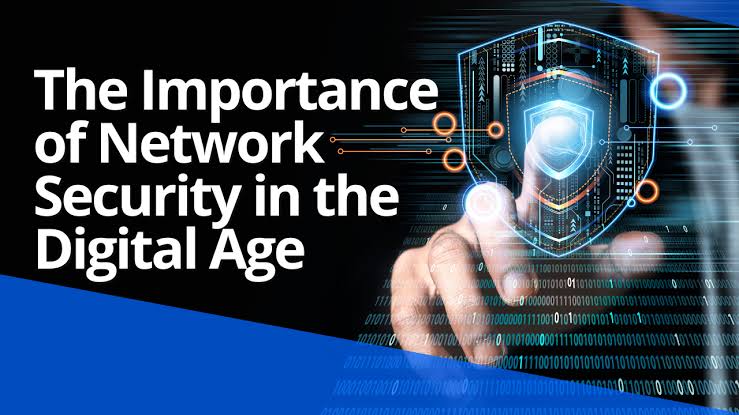Post Preview
Key Takeaways
- Discover the basics and the importance of secure networking in the digital world.
- Learn how emerging technologies influence secure networking strategies.
- Identify obstacles businesses face and potential solutions.
Why Secure Networking Matters
Secure networking is critical for businesses as we navigate a world increasingly connected by digital means. It supports regulatory compliance, business continuity, and the fight against cyber threats. Organizations may protect sensitive data and improve their capabilities by investing in dependable networking infrastructure, especially in light of the growing reliance on digital tools. Adopting SASE solutions is a shift in safe networking that requires consideration. This design meets the increasing need for secure, scalable, and effective network solutions. SASE is a novel approach to network security that blends cloud-powered all-inclusive security features with wide-area network capabilities. Organizations must use these solutions to stay competitive and keep up with the changing threat landscape.
The Basics of Secure Networking
Secure networking is essential to cybersecurity to safeguard sensitive data and digital infrastructure from intrusions and illegal access. It is a stronghold that protects vital data transfer inside and outside business networks, guaranteeing data availability, confidentiality, and integrity. Organizations can protect themselves from data breaches jeopardizing regulatory compliance and customer confidence by implementing well-thought-out defenses. Firewalls, virtual private networks, and encryption protocols are essential to secure networking. As gatekeepers, firewalls examine all incoming and outgoing network traffic by pre-established security standards. VPNs provide safe internet access via encrypted connections, and encryption ensures that data is unintelligible to unauthorized parties while it is being transmitted. Sophisticated cybersecurity agencies offer many materials with breakthroughs and core knowledge in secure networking.
Technology Trends Influencing Secure Networking
Cloud computing has revolutionized secure networking by offering scalability, flexibility, and collaboration. However, it also presents security risks and requires organizations to adapt security protocols to protect cloud-based applications and data. Solutions tailored to cloud security are crucial for resilience against unauthorized access and data breaches. As organizations migrate to the cloud, robust security controls are essential. Engaging with a comprehensive resource on cloud computing can provide insights into best practices, potential pitfalls, and strategic integrations for securing cloud environments effectively. The Internet of Things (IoT) has also exploded in popularity, offering opportunities and challenges. However, IoT devices often lack inherent security, exposing networks to vulnerabilities. To protect against breaches, companies must enforce stringent security measures tailored to IoT ecology, including device authentication, network segmentation, and continuous monitoring. A robust strategy for IoT security should be a core part of any organization’s networking strategy.
Business Benefits of Secure Networking
By implementing secure networking, businesses can gain a competitive edge, improved data protection, and operational flexibility. Businesses may safeguard confidential data from intrusions and online attacks by incorporating security into their network architecture. Businesses must be attentive in their data protection procedures to preserve customer information and company assets as cyber threats become more sophisticated. Improving data security policies directly impacts consumer trust because businesses can stand out from the competition by showcasing their dedication to strict data security procedures, which can influence client acquisition and retention. Businesses may foster creativity, optimize processes, and eventually boost their bottom line by increasing consumer happiness and service offerings by considering security as a strategic investment.
Addressing Common Networking Challenges
Cyber threats pose a significant challenge for organizations, requiring comprehensive threat intelligence and proactive defenses to detect, mitigate, and prevent malicious activities. A multi-layered security approach combining technology, processes, and people is essential, including regular risk assessments, real-time threat detection systems, and fostering a culture of security awareness. Tailoring defenses to an organization’s unique risk profile ensures robust protection against anticipated and emerging threats. Scalability is another challenge as businesses expand and their networking needs change. Solutions like SASE can facilitate secure network access that adapts to growing and evolving business needs. Scalability in secure networking requires strategic foresight to ensure consistent security policies and practices, blending new technologies seamlessly with existing infrastructure to maintain security resilience without disrupting operations.
Implementing Effective Secure Networking Strategies
Adopting secure networking best practices can help organizations become more resilient to threats. They include strict data encryption, least privilege access, and frequent upgrades. It is essential to assess and modify network security protocols continuously. Establishing a security culture within the company is critical, as workers are vital players in risk identification and mitigation. Comprehensive training programs can provide employees with the skills and information they need. Practical case studies include information about how businesses have integrated SASE solutions, enabled secure remote access, and reduced hardware maintenance expenses, among other secure networking tactics. The following benefits arise from analyzing these case studies:
- Practical ideas for applying similar strategies.
- Fostering industry-wide improvements in secure networking.
- Preparing businesses to face digital challenges.
The Future of Secure Networking
Secure networking will remain a crucial aspect of digital business strategies in the future. AI-driven security solutions are expected to anticipate and neutralize real-time threats increasingly. Zero-trust security models are also likely to rise, emphasizing a “never trust, always verify” approach to network interactions. Staying informed about emerging trends is crucial for businesses to position themselves against future security challenges and capitalize on new technologies as competitive differentiators. Organizations should prioritize continuous assessment and improvement of their security measures to prepare for the future, invest in robust security training, determine policy impacts, and adopt cutting-edge tools and methodologies. This proactive approach will create resilient, forward-thinking, and secure networks.
Conclusion
The ongoing digital revolution is changing businesses, and secure networking is becoming increasingly important. Businesses may effectively address the modern world’s security problems by being aware of them, developing action plans, and protecting their assets as they prepare for future expansion and success. Organizations can safeguard their digital future by adopting cutting-edge security solutions and staying current with market developments.



